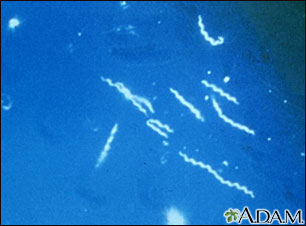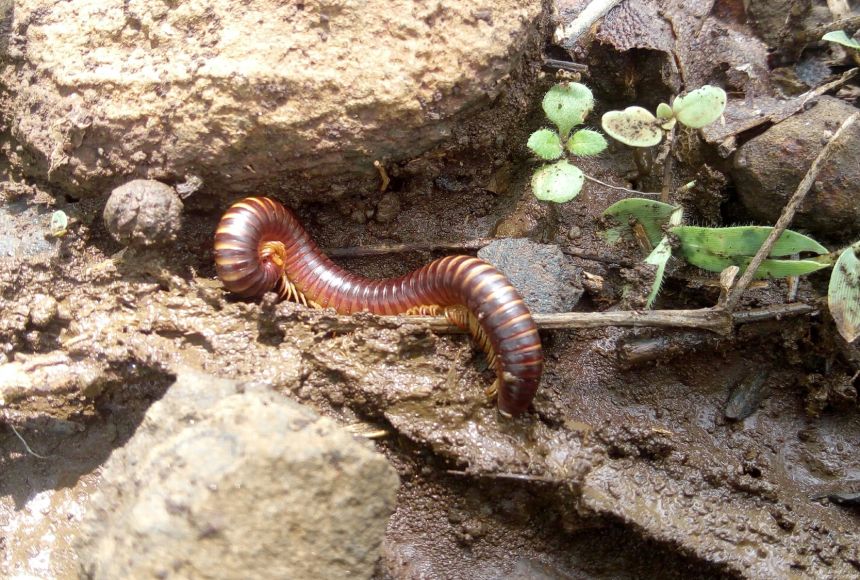7th Grade Chapter 7 Micro Organisms and Us : Life and Food
Microorganisms, also known as microbes, are invisible to the naked eye but they shape nearly every part of life on Earth. Let’s explore two major roles they play: as living organisms and as essential agents in food production.
7.1 Microorganisms as Living Things
What Are Microorganisms?
Microorganisms are tiny living things that exist all around us in the soil, in water, on your skin, and even inside your body. Despite their size, they perform all the functions that define life:
They grow
They reproduce
They respond to their environment
They obtain and use energy
There are five major types of microorganisms:
Bacteria – single-celled organisms with no nucleus.
Fungi – includes yeasts and molds; some are multicellular.
Protozoa – animal-like microbes that move and hunt.
Algae – plant-like microbes that photosynthesize.
Viruses – not technically alive, but they interact with cells and can cause disease.
💡 Did you know? One gram of soil can contain more than 40 million bacterial cells!
Characteristics of Living Microbes
To understand microorganisms as living things, we apply the MRS GREN model of life processes:
Movement
Respiration (energy use)
Sensitivity (reaction to environment)
Growth
Reproduction
Excretion (removing waste)
Nutrition (energy intake)
Even though microbes are small, they carry out all of these life functions. For example, bacteria "eat" sugars and excrete acids, while yeast cells grow and divide to form new colonies.
How Do We Study Microorganisms?
Because we can’t usually see them with the naked eye, we use tools like microscopes and scientific techniques like X-ray fluorescence (XRF) and culturing on agar plates. Scientists use staining techniques to help see the cells better, and they classify microbes using shape, structure, and DNA analysis.
Common shapes of bacteria:
Cocci (spherical)
Bacilli (rod-shaped)
Spirilla (spiral)
How Bacteria Group Together
After bacteria divide, they sometimes stay stuck together in special patterns:
Diplo-: in pairs
Strepto-: in chains
Tetrad: in groups of four
Sarcinae: in groups of eight
Staphylo-: in clusters, like grapes
⚪ Cocci (Round Bacteria)
Cocci are round and come in different arrangements:
Diplococci: in pairs
Streptococci: in chains
Tetrads: in groups of four
Sarcinae: in groups of eight
Staphylococci: in bunches
🧫 Example:
Staphylococcus aureus lives on your skin and in your nose. Some strains are harmless, but others, like MRSA, are dangerous and hard to treat because they resist antibiotics.
🟫 Bacilli (Rod-Shaped Bacteria)
Bacilli look like rods or little sausages. They can appear as:
Single rods (Monobacillus)
Pairs (Diplobacilli)
Chains (Streptobacilli)
Side-by-side rows (Palisades)
Short, oval rods (Coccobacilli)
🧫 Example:
E. coli lives in your intestines and helps digest food. Most types are helpful, but some can make you sick.
🌀 Spiral Bacteria
These bacteria look like curly spirals or springs and come in two main types:
Spirilla: stiff and spiral-shaped; may have tails (flagella) to help them move
Example: Spirillum minus (causes rat-bite fever)
Spirochetes: long, thin, and flexible spirals
Example: Treponema pallidum (causes syphilis)

✔️ Vibrio (Comma-Shaped Bacteria)
Vibrio bacteria look like tiny commas. They often live in water and can cause illness.
🧫 Example:
Vibrio cholerae causes cholera, a serious disease that causes diarrhea and dehydration.
7.2 Microorganisms in Food Production
Microbes in the Kitchen
While many people associate microbes with dirt or disease, they also help us create some of the world’s most loved foods. Fermentation, a process where microbes break down sugars without oxygen, is the secret behind bread, yogurt, cheese, soy sauce, and more.
When yeast is added to bread dough:
It feeds on sugars in the flour.
It releases carbon dioxide (CO₂) and alcohol.
CO₂ forms bubbles, causing the dough to rise.
In yogurt:
Bacteria are added to milk.
They convert lactose (milk sugar) into lactic acid.
This acid gives yogurt its tangy taste and thick texture.
🧪 Mini Experiment: Let students bake quick bread with yeast, observe the rising process, and discuss the chemical changes.
Advantages of Microbial Food Production
Preservation: Fermented foods last longer.
Flavor: Microbes create complex, savory tastes.
Nutrition: Some microbes make vitamins and digestive enzymes.
Health: Probiotics, or “good bacteria,” help maintain a healthy gut.
Dangers of Spoilage
Not all microbes are helpful some can spoil food or cause food poisoning. Learning proper hygiene and food storage is important to prevent growth of dangerous microbes like E. coli or Salmonella.
7.3 Microorganisms as Decomposers
🌿 "The Earth’s Recyclers"
What is Decomposition?
Decomposition is the process of breaking down dead plants, animals, and waste into simpler substances that can be reused in the environment. Without decomposition, nutrients would stay locked in dead matter and never return to the soil.
The main agents of decomposition are:
Bacteria – These are the fastest decomposers. They digest matter by releasing enzymes that break large molecules into smaller ones.
Fungi – Especially molds and mushrooms. They grow on decaying matter and use their thread-like structures (called hyphae) to release enzymes into the material and absorb nutrients.
🔬 How Microorganisms Decompose Organic Matter
Colonization:
As soon as an organism dies, bacteria and fungi begin to colonize the body or plant matter.Enzyme release:
These microbes secrete enzymes (special proteins) that break down complex substances like:Proteins → amino acids
Carbohydrates → sugars
Lipids (fats) → fatty acids and glycerol
Absorption and respiration:
The nutrients are absorbed by the microorganisms for energy and growth. They also release carbon dioxide (CO₂) and water as byproducts during respiration.Nutrient return:
Nutrients are released into the soil or water, where they are reused by plants, restarting the nutrient cycle.
📈 Why Are Decomposers Important in Ecosystems?
They recycle nutrients back into the soil (like nitrogen, phosphorus, and potassium).
They prevent buildup of dead matter.
They support plant growth, which in turn feeds herbivores and supports the food web.
They help in composting and waste management in human systems too.

🎨 Diagram Drawing Activity
Title: The Microbial Decomposition Cycle
Instructions for students:
Use arrows to show the flow of energy and matter from a dead organism through bacteria/fungi back to the soil and plants.
Include:
Dead leaf or animal
Fungi and bacteria
Arrows showing breakdown
Nutrients returning to soil
Plant absorbing nutrients
Add labels and keywords like: "enzymes," "nutrient cycling," "CO₂ release"
7.4 Microorganisms & Diseases
While many microorganisms are harmless or even helpful to humans, some are responsible for making us very sick. These harmful microbes are called pathogens, and they come in different forms: bacteria, viruses, fungi, parasites, and prions. Understanding these disease-causing organisms helps us stay healthy, prevent illness, and develop treatments when outbreaks occur.
🦠 What Are Pathogens?
Pathogens are microorganisms that cause disease in humans, animals, or plants. They can invade the body, multiply, and interfere with normal bodily functions. Some produce toxins, others damage cells directly, and some trigger harmful immune responses.
Pathogens are transmitted in different ways:
Through air (like COVID-19 or tuberculosis)
In food or water (like E. coli or cholera)
Via direct contact (like fungal infections)
Through insects or animals (like malaria or rabies)
🧫 Types of Disease-Causing Microorganisms
1. Bacteria
Bacteria are single-celled organisms that can survive in many environments. Most are harmless, but some cause serious diseases.
Examples of bacterial diseases:
Tuberculosis (TB) – caused by Mycobacterium tuberculosis
Strep throat – caused by Streptococcus pyogenes
Cholera – caused by Vibrio cholerae
Food poisoning – caused by E. coli and Salmonella
🧪 Treatment: Most bacterial infections can be treated with antibiotics, though antibiotic resistance is becoming a major global issue.
2. Viruses
Viruses are not living cells they are tiny genetic packets that can only reproduce inside a host’s cells. Once inside, they take over the cell's machinery and multiply rapidly, often destroying the host cells in the process.
Examples of viral diseases:
COVID-19 – caused by the SARS-CoV-2 virus
Influenza (flu)
HIV/AIDS
Measles
Ebola
💉 Prevention: Vaccines are the most effective way to prevent many viral infections. Treatment varies—some viruses can be managed with antiviral drugs, but many have no cure.
3. Fungi
Fungi can live on skin, in the mouth, or inside the body. They often affect the skin or mucous membranes but can also infect internal organs, especially in people with weakened immune systems.
Examples of fungal diseases:
Athlete’s foot
Ringworm
Oral thrush – a yeast infection in the mouth
Aspergillosis – a lung infection caused by mold
🧴 Treatment: Fungal infections are usually treated with antifungal creams, sprays, or oral medications.
4. Parasites
Parasites are organisms that live on or inside a host and feed off it. They often come from contaminated food, water, or insect bites.
Examples of parasitic diseases:
Malaria – spread by mosquitoes and caused by Plasmodium protozoa
Giardiasis – a stomach infection from contaminated water
Tapeworms – intestinal parasites
Sleeping sickness – transmitted by tsetse flies
🦟 Treatment: Many parasitic infections can be treated with antiparasitic drugs, but prevention often involves improving hygiene and controlling insect populations.
5. Prions
Prions are infectious proteins not living organisms that cause rare but deadly brain diseases. They work by misfolding normal proteins in the brain, leading to rapid degeneration.
Examples of prion diseases:
Mad cow disease (BSE)
Creutzfeldt-Jakob disease (CJD)
Kuru – linked to cannibalistic rituals in Papua New Guinea
☠️ Note: Prion diseases are untreatable and fatal. They are also very difficult to destroy with heat or disinfectants.
🔬 How Do Pathogens Cause Disease?
Once inside the body, pathogens may:
Multiply rapidly, overwhelming the immune system
Damage tissues directly (e.g., viruses destroying cells)
Release toxins that poison the body (e.g., tetanus)
Trigger inflammation or immune overreaction
Your body’s immune system fights off most microbes, but when it loses the battle, disease develops.
🧼 Protecting Ourselves from Pathogens
You can reduce your risk of getting sick by following simple health habits:
Wash your hands frequently
Get vaccinated
Avoid close contact with sick people
Cook food properly
Use clean water sources
Take antibiotics only when prescribed






